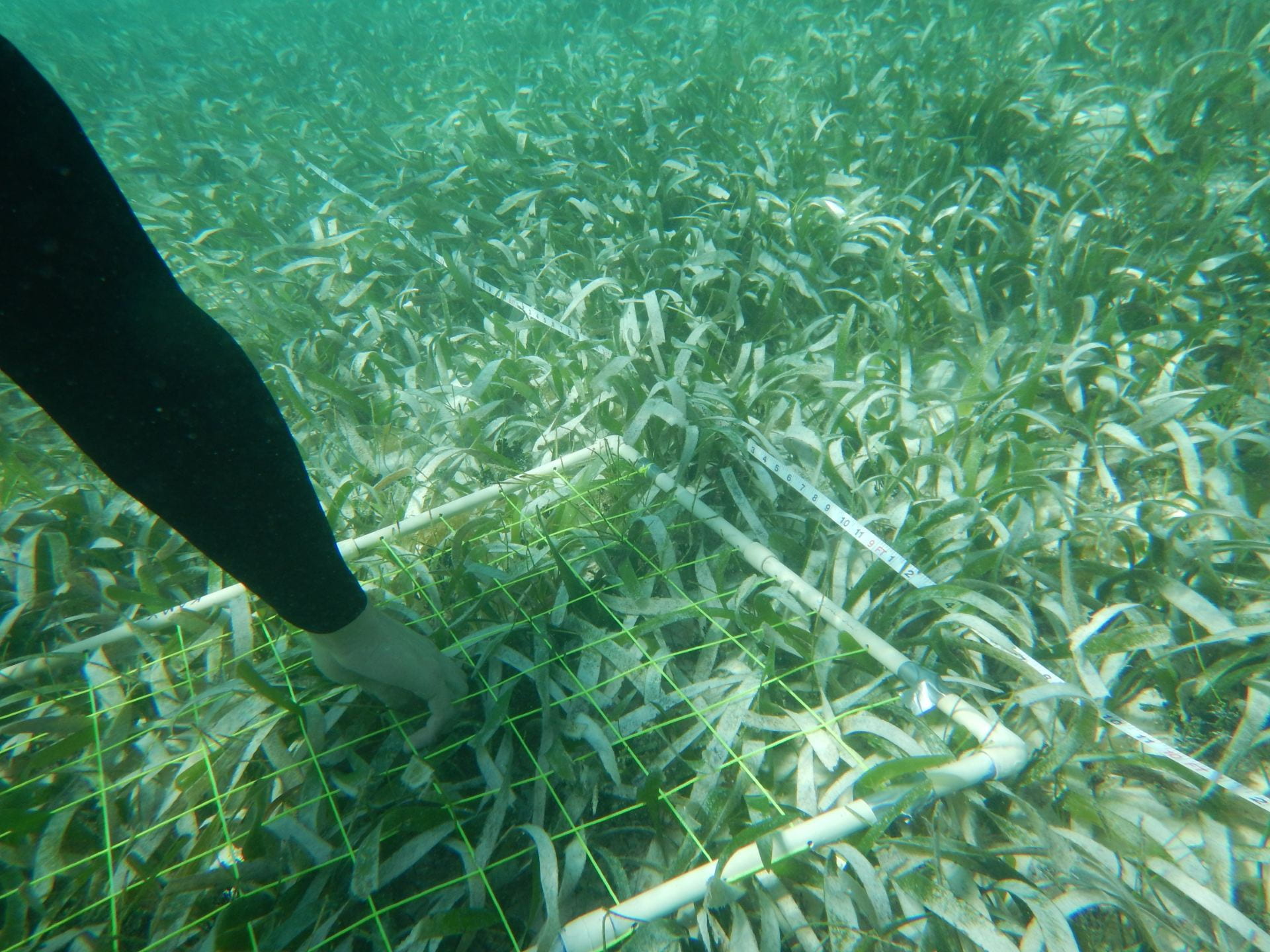This morning we went out first thing to catch the calm weather for snorkeling and get off the island which was very buggy (because there was no wind). We went again to a patch inside and outside of the Marine Protected Area, and in each place counted live coral using a quadrat method, 10 samples over a distance of 100 m for 5 groups. We ran into more trouble this time: the first sample was thick with fire coral—we even had to put our quadrat on fire coral once. Some of the reef was also deeper and we had to dive down to count the coral.

Then, we got in the water only to realize it was full of jellies, and we had to rush back onto the boat while one of the safety officers pushed the jellies away by pushing them by the heads. I didn’t see them, but we also saw comb jellies at that location. Amanda picked one up. It looked just like a handful of gelatin.
We went to another location outside the MPA without jellies to actually take data. I took pictures of corals when I wasn’t taking data, and I saw Golfball Coral (Flavia fragum) and another coral I still need to identify. There was still a lot of Mustard Coral (Porites astreoides) and I also saw some purple branching Porites, possibly divaricata again. Most of the Porites we have seen so far, excluding Mustard Hill Coral, have probably been P. divaricata due to branching near the tips, although a few times I have seen colonies that form thicker branches that might have been P. porites or P. fulcata. P. porites is generally greater than 1 cm wide, P. fulcata is is in between, and P. divaricata is less than 1 cm. I also saw some Grooved Brain Coral (Pseudodiploria labyrinthiformis), which has a groove on the ridge between valleys (the valley contains a row of mouths where polyps stick out (like most corals, these polyps extend primarily at night).
Amanda also saw one Montastrea cavernosa, which is the Great Star Coral. The surface is described in the ID book as “blister-like corallites”. They (the coralllites) are particularly large, size ¼ to ½ in. The colonies of corallites can get quite large, but the one Amanda saw was smaller. I saw only a picture. I also think I saw a lettuce coral (Agaricia). There are multiple species, but my picture is not good enough to tell the difference.
In the afternoon we took the boat over the reef crest (boundary of the ring-shaped atoll) to the forereef outside of the atoll. This is an area of greater wave action where corals form thicker, larger, and more robust forms such as massive or encrusting that don’t stick up into the water where branches could be broken off. This is also one reason the forereef has less algae than the patch reefs we have visited before, which were all inside the atoll in the lagoon, which is sheltered by the reef. We first swam along the wall, where we could not see the bottom over the ledge, then went to a patch reef closer to the crest.
We saw larger fish here too, including a reef shark and some larger Parrotfish. There were some very large Symmetrical Brain Coral (Pseudodiploria ———-). This species is actually very similar to Colpophyllia, but apparently Colpophyllia has deeper grooves, which is a common identifying characteristic in meandroid corals. However, it would be a much easier characteristic to use with more experience. From what I can tell in the ID book, Colpolhyllia also has wider valleys, so that may be used as an additional identifying feature. The most notable species of coral we saw on the reef was Dendrogyna, which is apparently rare (used to be more common). This is the pillar-shaped coral, and has a more bulky skeleton than other species. I think I also saw the Lobed Star Coral, which is Orbicella annularis. Its form is a group of lumps tightly packed and protruding from a hard substrate.

